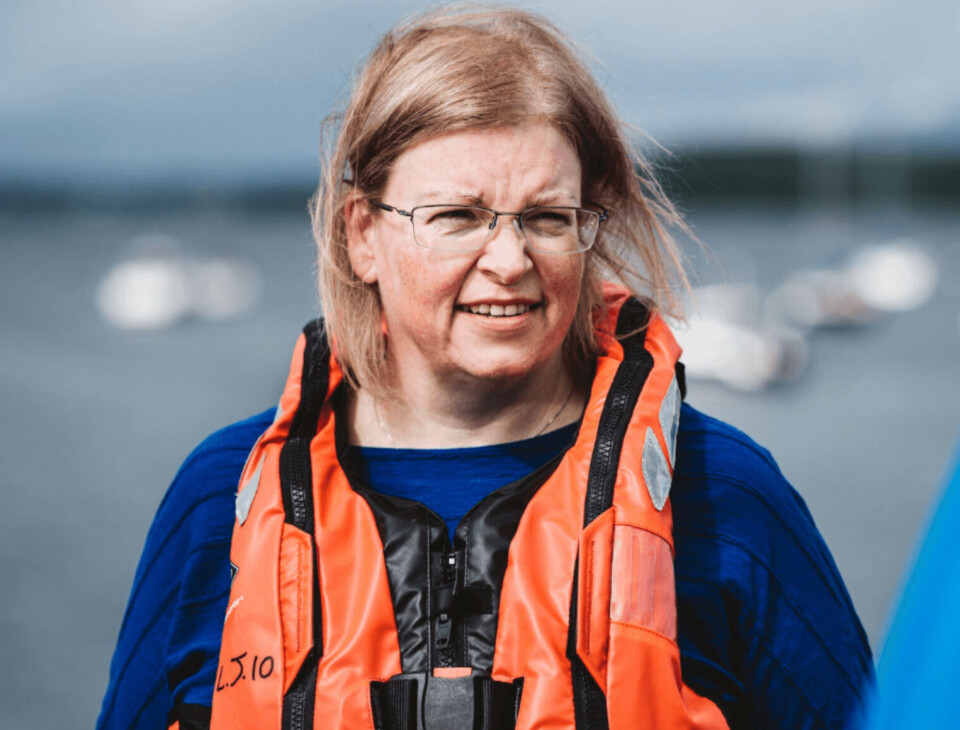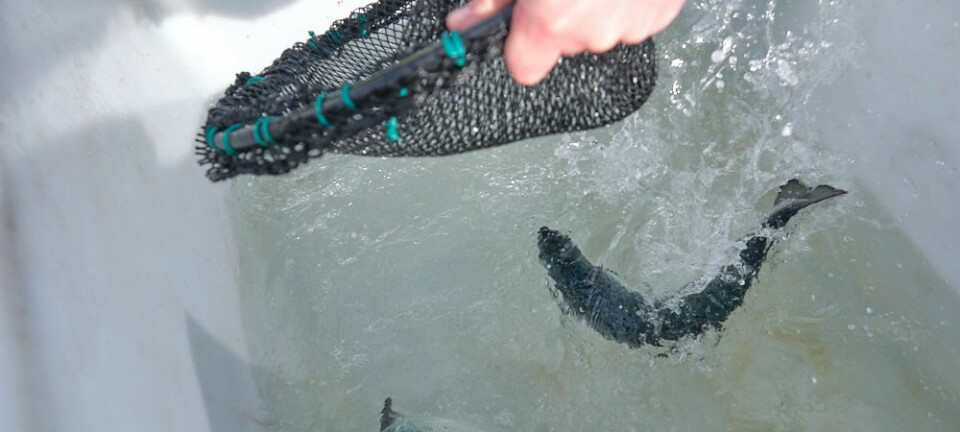
'If you want to see higher survival rates then don’t take away a vital medicine'
Fish vet criticises environment watchdog's move to reduce use of anti-lice treatment for salmon
A leading fish vet has criticised a planned reduction in the volume of in-feed anti-lice drug emamectin benzoate, known commercially as Slice, that can be used in Scotland.
The Scottish Government has directed the Scottish Environment Protection Agency (SEPA) to implement a new, lower environmental quality standard (EQS) for Slice use at all Scotland’s salmon farms within four years. The lower limit already applies to new farms, and was introduced following recommendations from the United Kingdom Technical Advisory Group, a partnership of the UK environment and conservation agencies.
Ronnie Soutar, head of veterinary services for salmon producer Scottish Sea Farms (SSF), said vets don’t want to be left without Slice in their medicinal toolbox.
Speaking to SSF’s staff newsletter, The Source, Soutar stressed that Slice was an important part of the lice control programme.
Post-transfer medicine
“We tend to prescribe it in the post-transfer to sea stage to try to delay and control the settlement of juvenile Lepeophtheirus lice,” said Soutar.
“It’s also very important in managing the seasonal influx of Caligus lice that come from wild fish and can cause sudden, more severe lice damage to larger fish. It’s unlikely we’ll have enough consent to use it in those fish under the new rules and that worries me.
“If you want to see higher survival rates then don’t take away a vital medicine that supports survival.”
Freshwater species
SSF’s head of sustainability and development, Anne Anderson, questioned the scientific basis for lowering the Slice limit. She said it had been set so low to protect a freshwater species, yet Slice is fed to the fish in a marine environment.
“What is the likelihood, if you think about the places where we’re farming, of a sediment which has emamectin benzoate present in it finding its way to a freshwater larva,” asked Anderson, who spent nearly 23 years in environmental protection, managerial, and executive roles with SEPA before joining the salmon sector.

There is a lack of balance between SEPA wishing us to control lice more in their new framework and at the same time using an over-zealous precautionary principle to take away the only sea lice intervention with a minimal stress to the fish because it doesn’t require any handling
“The whole sector’s average use of emamectin benzoate has been 42kg annually over the last five years – a small amount of medicine used to treat large numbers of fish. The seabed area of impact is very small, so the risk is small. This, and the absence of a likely pathway to the sensitive freshwater receptor, really questions the justification for what is, in real terms, a freshwater standard being imposed within the marine environment.
“In the wider context of sustainable water use, there is a lack of balance between SEPA wishing us to control lice more in their new framework and at the same time using an over-zealous precautionary principle to take away the only sea lice intervention with a minimal stress to the fish because it doesn’t require any handling.”
Impacts 'misrepresented'
SSF, Mowi, and Bakkafrost Scotland all oppose the reduced use of Slice.
In response to a SEPA consultation about the new EQS, Mowi said it will drive lower permitted levels of Slice and in some cases will result in non-viable treatment allowances to the detriment of the welfare of farm raised salmon and remove the protective secondary benefits the medicine provides in terms of protecting wild salmonids.
“Whilst the risk of impact of Embz (emamectin benzoate) on non-target species must be considered within regulatory controls, the available evidence on such impacts have been misrepresented and consistently overstated,” wrote Mowi.
“Additionally, the inclusion of ecotoxicological studies on freshwater insects within the derivation of the sediment EQS has driven an extremely precautionary and disproportionate approach. The evidential basis for the presence of freshwater insects and records of them residing in the marine environment is extremely limited.
“Mowi supports a precautionary approach to the discharge of Slice, but not an over-precautionary reaction that removes a valuable medicine for the purposes of sea lice control, which has benefits for the health of farm raised salmon and the protective benefit the medicine offers in respect of managing the risk of wider adverse interactions with wild salmonids, in order to offer nominal protection to an insect species that is not even found in the vicinity of marine fish farms.”
Significant inconsistencies
Bakkafrost Scotland stated in its consultation response that the implementation of the revised EQS is in direct conflict with the current proposals made by SEPA under its Sea Lice Risk Framework (SLRF), highlighting significant regulatory inconsistencies.
“SEPA have made clear throughout consultation on SLRF that its proposals are aligned with recommendations made in the Salmon Interactions Working Group (SIWG) Report,” wrote Bakkafrost.
It added: “If the SIWG Report recommendations are a basis for implementing regulatory reform, then the current proposals are in direct conflict with recommendation 1.3 of the SIWG report, which states: ‘…The Scottish Government should holistically assess and review the approach to sea lice treatment, including access to medicines and the use of controls in their use.’ If the revised EQS is to be implemented, it should not be progressed until such a review has been undertaken, considering all sea-lice interventions available.”
Immediate implementation
Emamectin benzoate does not break down easily and residues are excreted by farmed salmon and can build up in the sea bed beneath pens. It is potentially harmful to prawns, crabs, lobsters and other crustaceans, depending on concentrations of the substance.
Critics of the salmon industry and some environmental organisations have criticised the four-year time frame for introducing the revised EQS, and want it imposed immediately.
In July, SEPA told investigative news site The Ferret that it was already applying the new safety limit to proposals for new or expanded salmon farms. The limit was based on “the best available scientific evidence on the toxicity of the medicine to aquatic life”, said the agency’s head of ecology, Peter Pollard.























































